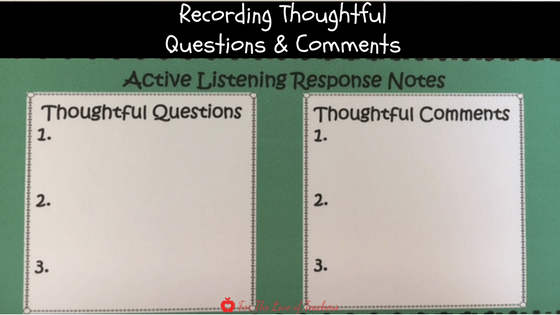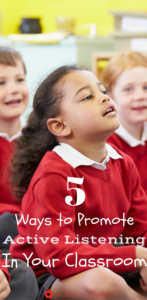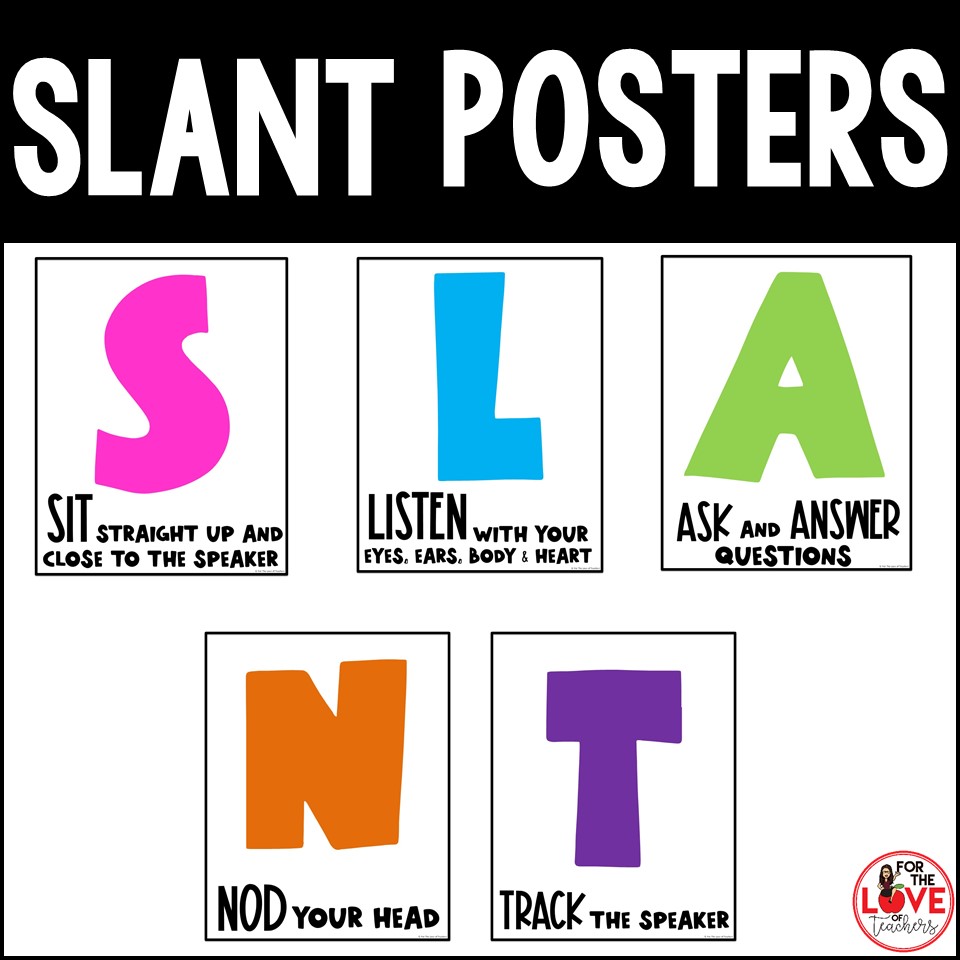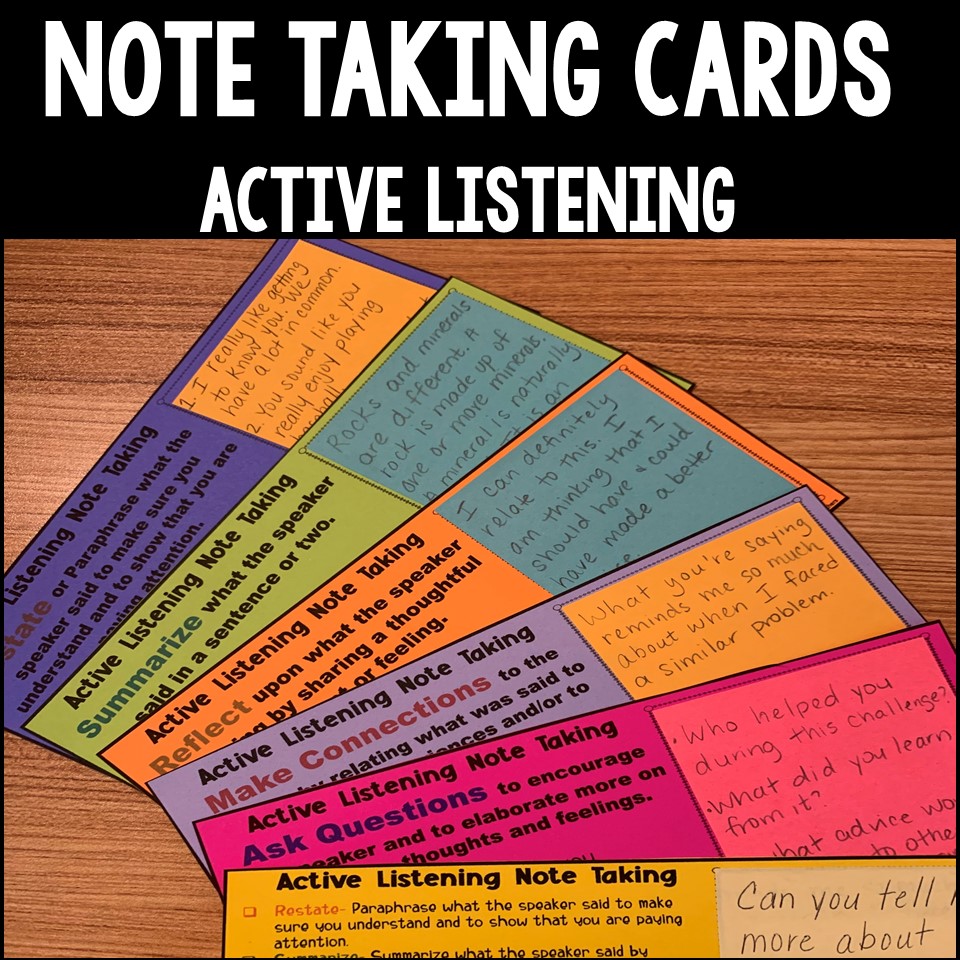We can all tell, whether a child or an adult when someone is actively listening. We can tell from the eye contact to the body language, to the facial expressions, and then finally the response one gets in return. All of us want to be heard and for our words to be understood. Active listening is an essential life skill as it helps both adults and students learn and build healthy and positive relationships with others.
Now imagine a classroom full of active listeners. Students listen intently, participate, and engage in what the speaker is saying. A teacher’s dream, huh?! When students know and feel that they are heard and understood, they are more likely to engage. Teaching, modeling, and providing guided practice in active listening transforms students into active listeners.
Teaching Your Students to Become Active Listeners
Introduce The Roles: The Sender and the Receiver
The sender is the person speaking and the one who is giving the information. The sender could be the teacher, a student, a presenter, etc. The sender’s job is to speak clearly, deliver the information, and engage the audience.
The receiver is the one receiving the information and is the active listener. The receiver’s job is to actively listen to the sender, process the information, make sense of it, and respond. This is challenging for many students and needs to be taught and modeled with a lot of guided practice. Here are some strategies that you could implement in your classroom to promote active listening.
1. SLANT is one of my favorite strategies for students to practice active listening. Post these posters in your classroom and remind students to LIVE by it!
Sit up straight and sit as close to the speaker as you can.
Listen with your eyes, ears, body, and heart.
Ask and answer questions.
Nod your head showing that you are receiving.
Track the speaker with your eyes.
2. Establish and Follow Rules for Active Listening
-
Always face the speaker and maintain eye contact.
-
Be attentive and engaged (listen with your eyes, ears, body, and heart).
-
Try to feel and understand what the speaker is saying.
-
Don’t interrupt the speaker.
-
Wait your turn to ask thoughtful questions or comments.
-
Give the speaker feedback.
3. Active Listening Practice
-
Always review with students that there are 4 ways to listen, with our eyes, ears, body, and heart.
-
Remind the receivers that to understand what the senders are saying, they’ll need to really listen and pay attention. It takes practice like any other skill.
-
Pair students up to practice listening skills, one student being the sender and the other being the receiver.
-
Students take turns telling their partner about one of the following, a happy memory, a funny story, or a proud moment.
-
Instruct the receivers to look at the senders (eye contact), ask thoughtful questions about what the sender is saying after he/she is done speaking, and show they are interested in how they look and how they act using SLANT.
-
Give students about 5 minutes each to tell their stories.
-
Have students volunteer to demonstrate their listening skills by sharing a story they heard from the senders.
4. Active Listening Note Taking- Thoughtful Questions & Comments
Another way to have your students practice active listening skills is to have them do some note-taking. I give my students Active Listening Note Taking Cards to first practice recording thoughtful questions and comments while listening to promote active thinking and listening. Note-taking often eliminates student distractions as they are focused on the speaker and the note-taking task at hand, they have their questions and comments ready when the speaker is ready. Teach students to practice active thinking and listening so they bring more to the discussion. I let my students know when I’m ready for thoughtful questions and comments and they will show me a “Q” if they have a question or a “C” if they have a comment. They might even use both their hands to show that they have a question and a comment (see 7 signs/hand gestures for Classroom Management posters here).

5. Practicing Skills with Active Listening
Teach and model how to practice active listening with these 5 skills: restate, summarize, reflect, ask questions, or make connections to the speaker.
Restate- Paraphrase what the speaker said to make sure you understand and to show that you are paying attention.
Summarize– Summarize what the speaker said by including keywords, the main idea(s), and details in a sentence or two.
Reflect– Reflect upon what the speaker is saying by sharing a thoughtful comment or feeling.
Ask Questions- Ask questions to get more information and to encourage the speaker to elaborate on their ideas, thoughts, and feelings.
Making Connections- Make connections to the speaker by relating what was said to your own life experiences and to the real world.
After teaching and practicing all the skills, you can give your students the note-taking card with all the skills, and students could choose ONE skill they’ll focus on while listening.
Get the Active Listening Note Taking Cards & SLANT Posters here. These can be laminated for easy reuse, written directly on, or used with a sticky note. You could also make a laminated set of these cards for each student and attach it to a binder ring for easy access and practice. Perhaps you just want to paste one page (3 note-taking cards) at a time into a notebook
You could teach, model, and do guided practice with active listening during these classroom activities.
-
During a lesson
-
While watching a video
-
When someone is presenting (speaker, teacher, student, parent, etc.)
-
When a student is sharing their work
-
During a read-aloud
-
While students are peer coaching
-
Maybe even while listening to a podcast
You’ll see that with modeling, teaching, and guided practice in active listening your students will become active listeners and will be more engaged. There will be fewer distractions and more learning. How do you promote active listening with your students?
Follow me to be notified when new resources are uploaded to the Shop and join the email list to receive the latest and greatest updates, posts, and some awesome freebies!!
If you like it, then pin it!


Christine Weis is a passionate educator, classroom management coach, wife, and mom of two busy boys. She enjoys teaching, writing, and creating resources for teachers.








Hmmm. You got me thinking how I can use note taking with my first graders. I think this would be a very effective tool to use with primary students.
We talk a lot about Most Important Words when we are summarizing a text. I think that it would be a great way to introduce active listening note cards too! When they are listening to a lesson, a student share, etc. I could have my students write down a word that was said that got them thinking during the presentation. I am going to have to take a closer look at your note-taking cards because I am loving this strategy! Thanks!
Ok so here are my thoughts with using this with firsties…start with the questions and comments after a speaker. Start out with teaching and modeling this orally and then have them practice writing 1 thoughtful questions and/or comment after a speaker. Then you could just dive into the Ask Questions listening card. I would then teach and model making connections after a speaker. They could respond with this reminds me of…or I can make a connection to this by… You could also have kids practice orally paraphrase what the main idea of what the speaker is saying in their own words. Etc. Start out slow and model and teach first orally and then get them note taking while the speaker speaks if you think they are developmentally ready for that. Hope this makes sense! I think listening skills are often taught a bit too late. Many teachers say that their students just don’t “pay attention” but I think they lack the listening skills they need in order to pay attention.
Thanks for reading and commenting!
Christine at For The Love of Teachers
Great Read! Most children struggle with listening and adults as well, this will be a great help!
Thank you! I agree that many adults too struggle with active listening. It’s definitely a life skill. Thanks for reading!
Christine at For The Love of Teachers
I run a group of 20 five-to six-year-old girls and we constantly have problems with them not paying attention. Since it’s a Girl Guide group, our trick is to raise our hands, which means silence. Luckily, we’ve never had to do any long speeches.
Teaching students active listening at ages 5-6 is so important. Developmentally, kids at that age need a lot of modeling and guided practice. Thanks for reading!
Christine at For The Love of Teachers
I’m currently taking training courses to become a teacher and this was extremely helpful!
I’m so glad Taylor! Best of luck in your teaching career. I hope you find For The Love of Teachers helpful as you train. Reach out if you need anything!
Christine at For The Love of Teachers
I learned the SLANT method at a leadership camp I went to as a kid. I have seriously used it in every job interview, networking event and when I’m meeting people for the first time.
That’s awesome Marcie! I use it too in the same situations you mentioned. I wish more adults were aware of SLANT in the workplace. Thanks for reading!
Christine at For The Love of Teachers
I know a lot of my friends that are teachers who’d truly appreciate this post! xo, Suzanne
Great…Please pass it along! Thanks for reading!
Christine at For The Love of Teachers
As a former preschool teacher, I couldn’t agree more with you on your tips. Creating active listeners seems like an impossible task sometimes, but so necessary. To all new teachers – don’t give up! Your persistence will work eventually 🙂 Great tips!
Thanks Amy! I completely agree…active listening is so hard to teach BUT must be taught every single year with opportunities for kids to develop and practice these skills. I encourage teachers to do it more and more at every grade level. Thanks for your comment!
Christine at For The Love of Teachers
Wow! These are great tips for children. I would love to teach my daughter when she gets school next year.
Thanks! Appreciate your comment! 🙂
Christine at For The Love of Teachers
These are great tips. Teaching our children to be active listener is a great life skill. Thanks for sharing.
Thank you! I agree…active listening is a life skill to take the time to teach! Thanks for reading!
Christine at For The Love of Teachers
this is such cool & great advice for young kids & adults alike – i can commit to some of these things to help me as a hairstylist too when dealing with clients – thank you!
Thanks Hal! I’m glad that you could use this information and relate it to your own work. Active Listening is a life skill for sure! Thanks for reading!
Christine at For The Love of Teachers